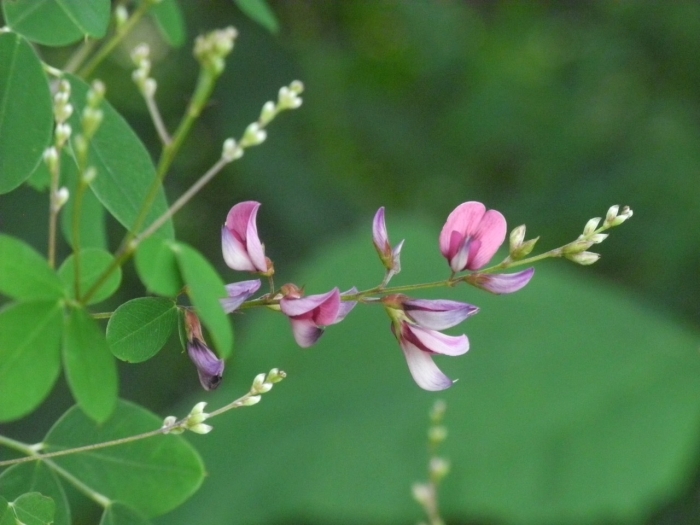Bicolor Lespedeza
(Lespedeza bicolor)
Bicolor Lespedeza (Lespedeza bicolor)
/
/

Michael J. Papay
CC BY 4.0


















































Estimated Native Range
Summary
Bicolor Lespedeza is valued for its ability to control erosion and enhance wildlife habitats, offering cover and food for various animals. It is often used in reclamation projects and naturalized areas. In cultivation, it thrives in full sun and is drought-tolerant, requiring low amounts of water. It adapts well to a variety of soils, preferring those with medium to fast drainage. However, gardeners should be cautious as Lespedeza bicolor can be extremely invasive outside its native range, potentially outcompeting native vegetation. It is important to check local regulations before planting.CC BY-SA 4.0
Plant Description
- Plant Type: Shrub
- Height: 5-9 feet
- Width: 5-9 feet
- Growth Rate: Moderate
- Flower Color: Pink, Purple
- Flowering Season: Summer, Fall
- Leaf Retention: Deciduous
Growth Requirements
- Sun: Full Sun
- Water: Low
- Drainage: Medium, Fast
Common Uses
Bank Stabilization, Bee Garden, Bird Garden, Butterfly Garden, Drought Tolerant, Edible*Disclaimer: Easyscape's listed plant edibility is for informational use. Always verify the safety and proper identification of any plant before consumption., Erosion Control, Low Maintenance, Showy Flowers
Natural Habitat
native to open woodlands, forest edges, and grasslands in East Asia, including China, Taiwan, Korea, and Japan
Other Names
Common Names: Lespedeza Bicolor, Two-Coloured Bush-Clover, Bush Clover, Shrub Lespedeza, Lespedezie, Kahevarvuseline Lespedeetsa, Lespedeza Bicolore, Lespédèze Bicolore, Luzerne Tropicale, Dvispalve Dobilune
Scientific Names: , Lespedeza bicolor, Lespedeza bicolor var. bicolor, Lespedeza bicolor var. sericea, Lespedeza bicolor f. acutifolia, Lespedeza bicolor f. alba, Lespedeza penduliflora, Desmodium penduliflorum, Lespedeza bicolor var. japonica, Lespedeza bicolor var. nana
GBIF Accepted Name: Lespedeza bicolor Turcz.